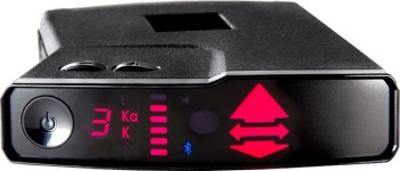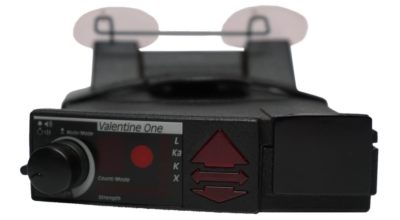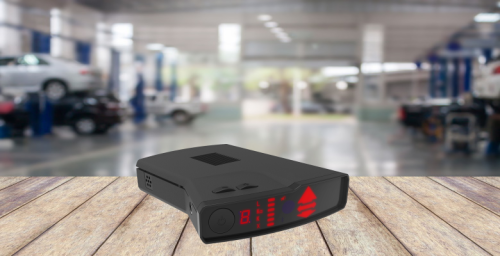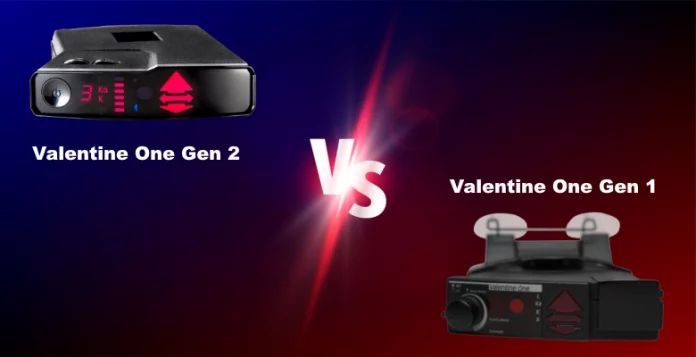For nearly 30 years, the Valentine One radar detector has set the standard that all other competitors have had to measure up to. Now Valentine has updated this all-time favorite, calling it the Valentine One Generation 2, or V1G2. In order to understand the differences between the Gen 1 and the Gen 2, we can compare the two side by side, the Valentine One Gen 1 vs. the Valentine One Gen 2.
Valentine One Gen 2 vs Gen 1 Side by Side:
 |  | |
|---|---|---|
| Valentine One Gen 2 | Valentine One Gen 1 | |
| Range | Long Range, 360° Protection | Long Range, 360° Protection |
| Built-in GPS | No | No |
| Display | Multi-color OLED | OLED display |
| False Filter | K-Verifier technology | K band BSM Filter |
| Red Light & Speed Camera Alerts | Yes | No |
| Speed-based Auto Mute | Yes | No |
| Bluetooth connectivity | Yes | No |
| Price | Find on Amazon | Find on Amazon |
Valentine One Gen 2

One major improvement of the Valentine One Gen 2 is its design. The case is sleeker and instead of knobs it now has buttons. The display screen is now fully LED although red is still the only color option because Valentine believes that red is the easiest color to see when viewed in bright sunlight.
Along with a high degree of sensitivity comes false alerts. The V1G2 has improved false alert filtering and assigns a lower volume alert to these mostly weaker radar signals. This allows you to hear that the alert is from a weak source and probably not a police radar. BSM (Blind Spot Monitoring) filtering will keep the Gen 2 from alerting to newer vehicle collision avoidance systems. If the unit does alert to a BSM system, the alert will also be at a lower volume, allowing the driver a less panicked response to the alert.
The V1 Gen 2 is lightning fast at scanning across the X, K, and Ka bands of police radars. Valentine has added military radar technology (surface-acoustic-wave dispersive-delay-line, or SAWD2L) to the Gen 2. There is also Low Noise Amplifier (LNA) technology that enables the detector to pick up and magnify weaker signals at greater distances.
The best Instant-On police radars can get an accurate speed-reading in just 0.5 seconds. That’s extremely fast, but the V1G2 scan times are just 0.002 seconds per antenna. That comes to 0.004 of a second for both antennas, which means that it is 125 times faster at picking up a radar return signal than the police Instant-On radar gun.
The Gen 2 has several different logic modes in which it can be operated. In “A” mode (All Bogies Mode) the V1 alerts visibly and audibly to all radar signals it detects. “l” mode (Logic Mode) can be used for in town driving where many stationary radars, like door opening systems, are going to be encountered. “L” mode (Advanced Logic Mode) is the mode recommended by Valentine for driving in urban areas. Weak alerts are hidden and the detector only sounds the alert once the signal gains in strength.
While the Valentine One Gen 2 doesn’t have GPS, it does have built-in Bluetooth and it can be paired with a phone and then use third-party apps like V1Driver for iOS and JBV1 for Android that can incorporate GPS lockout functionality to the V1G2.
An important function that the V1G2 lacks is the ability to detect MRCD/MRCT photo radar guns that are becoming popular around the country. However , at the same time it is undetectable by RDD (Radar Detector Detectors) units, which is critical if you are driving in locales where using a radar detector is illegal.
Pros
- Longer detection range
- Bluetooth built-in
- RDD immunity
- Improved false alert and BSM filtering
- LED display
Cons
- No GPS capability
- No MRCD/MRCT photo camera alerts
Valentine One Gen 1

Since its inception, the Valentine One Gen 1 has been considered the best radar detector on the market. The fact that it can detect five different radar frequency bands as well as lasers means that no matter which type of speed detecting system the police are using, the V1G1 can provide you with an advance warning. And although the overall design of the unit hasn’t changed, the technology inside it has been continuously updated throughout the years.
Having two antennas allows the Gen 1 to search for radar threats in front of you and behind you and it can warn of more than one threat at a time. It has directional arrows to indicate where the threat is in relation to your vehicle, in front, back, or to either side. It’s impossible for red light and speed cameras to go undetected by the Valentine One.
The Gen 1 doesn’t have a GPS function and it doesn’t have many of the adjustable user settings found on other radar detectors, like auto mute. This is one of the reasons the V1G1 is so easy to use, it favors performance over show. It can detect a police radar at well over a mile away.
The Valentine One Gen 1 does a better job out on the highway than it does the city. It does such a good job of detecting that it picks up many junk signals from door opening systems and other traffic equipment that causes it to issue a false alert. The unit will tell you that the alert is junk by displaying a “J”, but it is still a noisy false alert.
Pros
- Long range detection
- Dual antennas
- Easy to read display
- Simple installation
Cons
- Heavy weight
- Many false alerts
- No GPS capability
Review Conclusion
The V1 Gen 1 has been the radar detector standard bearer for many, many years. Upgrading from the V1 Gen 1to the newer V1 Gen 2 is like the difference between being good enough to play college football and being good enough to play professional football in the NFL. With added Bluetooth, improved sensitivity and detection range, and better false alert filtering, making the move to the Gen 2 makes perfectly good sense. The Valentine One Gen 1 is still among the best radar detectors on the market, the Gen 2 is simply better (>>> Check current price on Amazon).
